Try this easy recipe for Greek Koulourakia cookies. With a tender interior and a slightly firmer exterior, these cookies are a perfect treat for any occasion, including Easter.
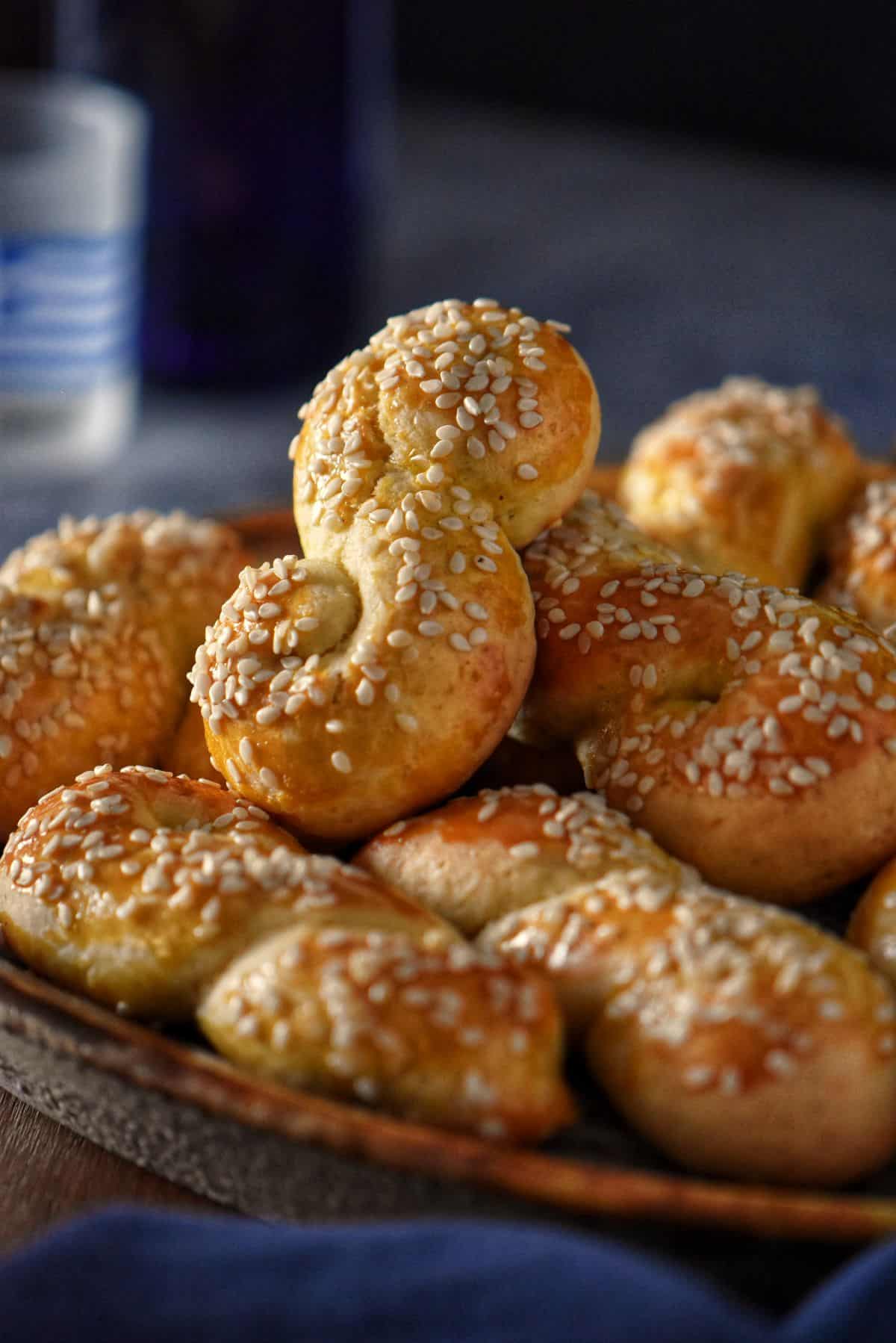
Like so many, I am sure you are trying to figure out how to pronounce Koulourakia unless you are of Greek origin.
My Greek friends pronounce it like this: koo-loo-RAH-kee-ah
Historians will inform us that these Greek Easter cookies can be traced back to Crete during the Minoan civilization (i.e., 2600 to 1100 BC). These delicious cookies really have been around for a long time!
Koulourakia were traditionally considered Easter cookies since they would be eaten on Easter Sunday, following the Lenten fast.
They are also deemed festive cookies that can easily be found at significant Greek holiday celebrations. They are also great cookies to make for fund-raisers and festivals.
Once you taste this delicious cookie, it will quickly become a tradition in your household!
A traditional Koulourakia recipe will include baker’s ammonia. This leavening agent, sometimes called ammonium bicarbonate, will help your dough rise and turn out with a light and crisp texture!
Today, I’m sharing a “modern” version of this easy recipe made with baking powder.
Jump to:
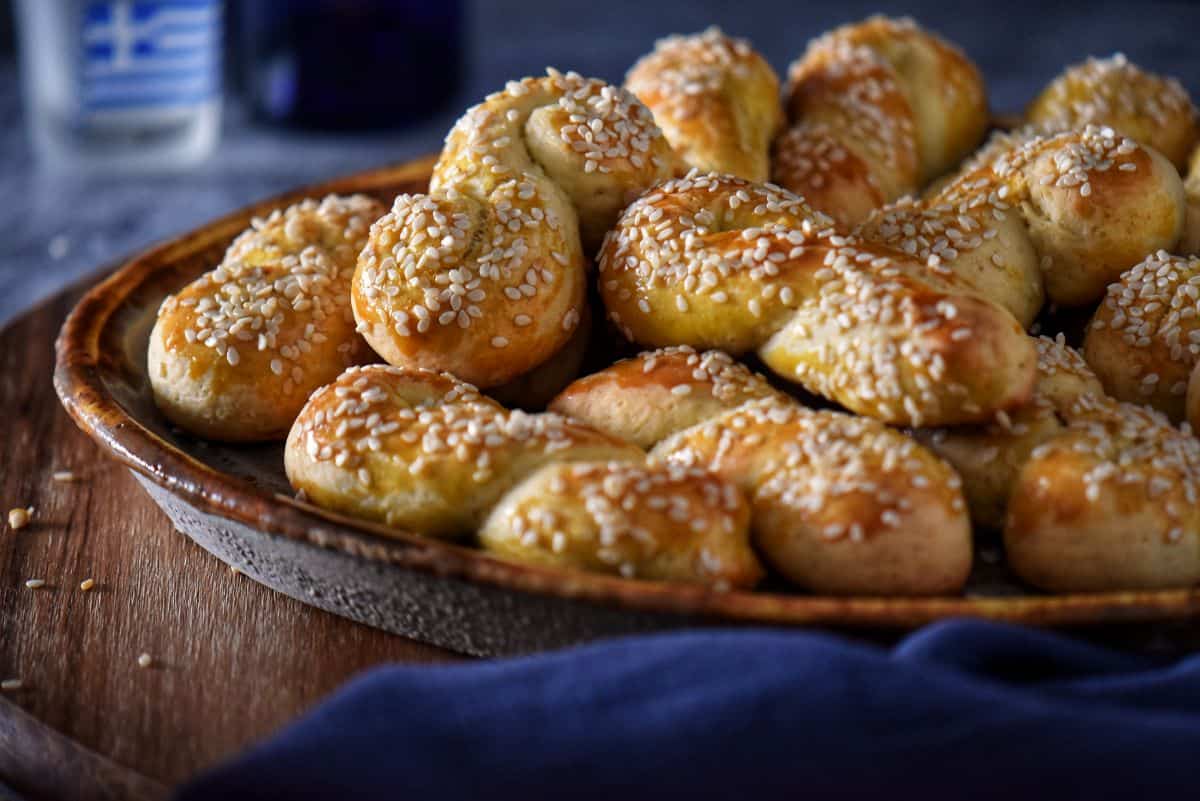
Prep and Cook Time
- Prep Time: 30-40 minutes (active; includes mixing, shaping, and egg wash)
- Optional Chill Time: 20 minutes (passive; helps with shaping)
- Bake Time: 15 minutes per batch (active)
Total Time: Approximately 45-55 minutes (without chill time)
Up to 1 hour 15 minutes if you include optional chill time and multiple baking batches.
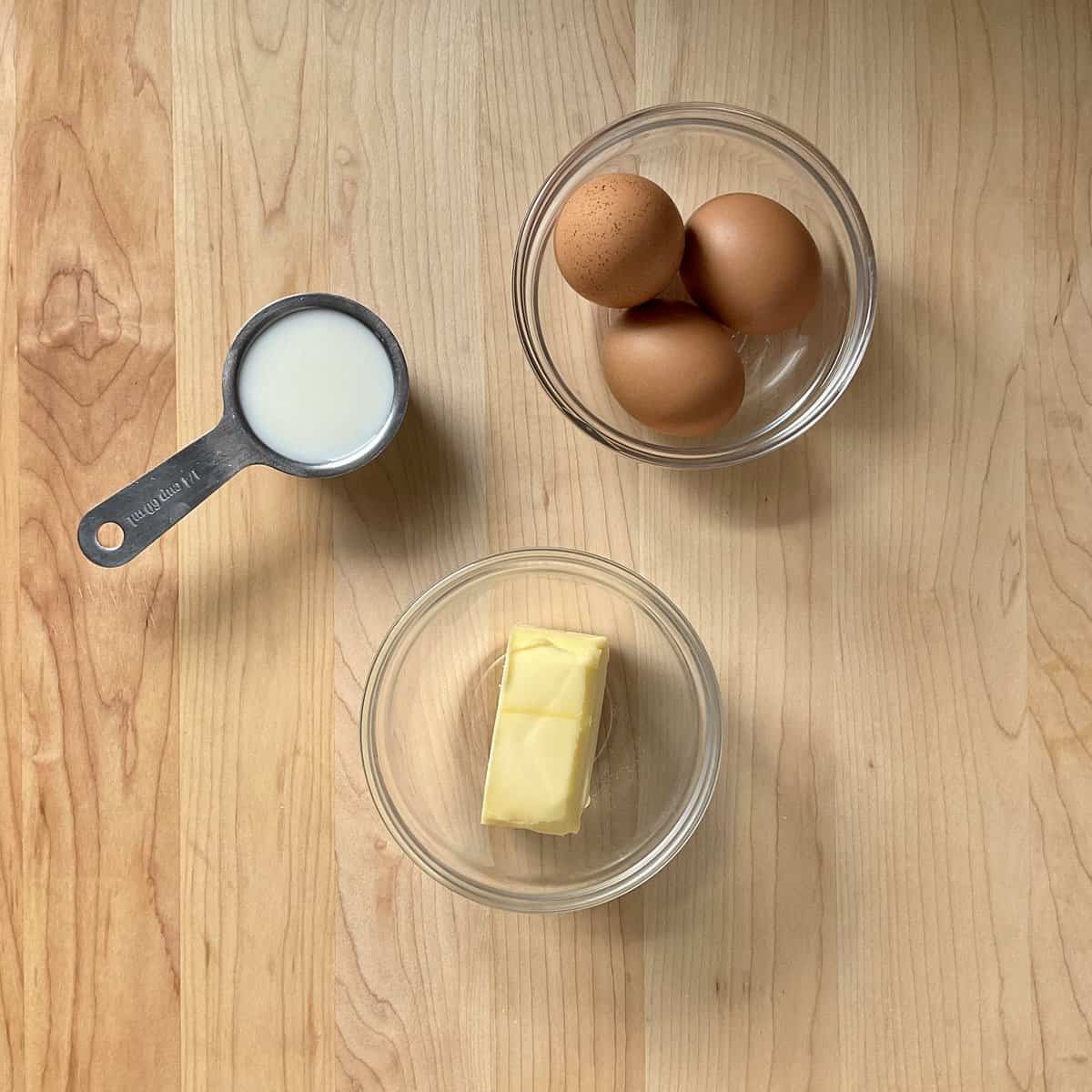
Mise en place
You’ll need to make sure that a few ingredients are at room temperature before combining them for this recipe.
One hour before you plan on starting your recipe, place ½ cup of butter, 2 eggs, 1 egg yolk, and ¼ cup of milk on the counter.
Sift together 3½ cups of all-purpose flour (500 grams) with 1½ teaspoons of baking powder. Set it aside for now.
Instructions
Making the dough for koulourakia is a simple process that can be done with just a few ingredients. Before we begin combining these simple ingredients let’s make some orange-scented sugar.
How to make orange sugar
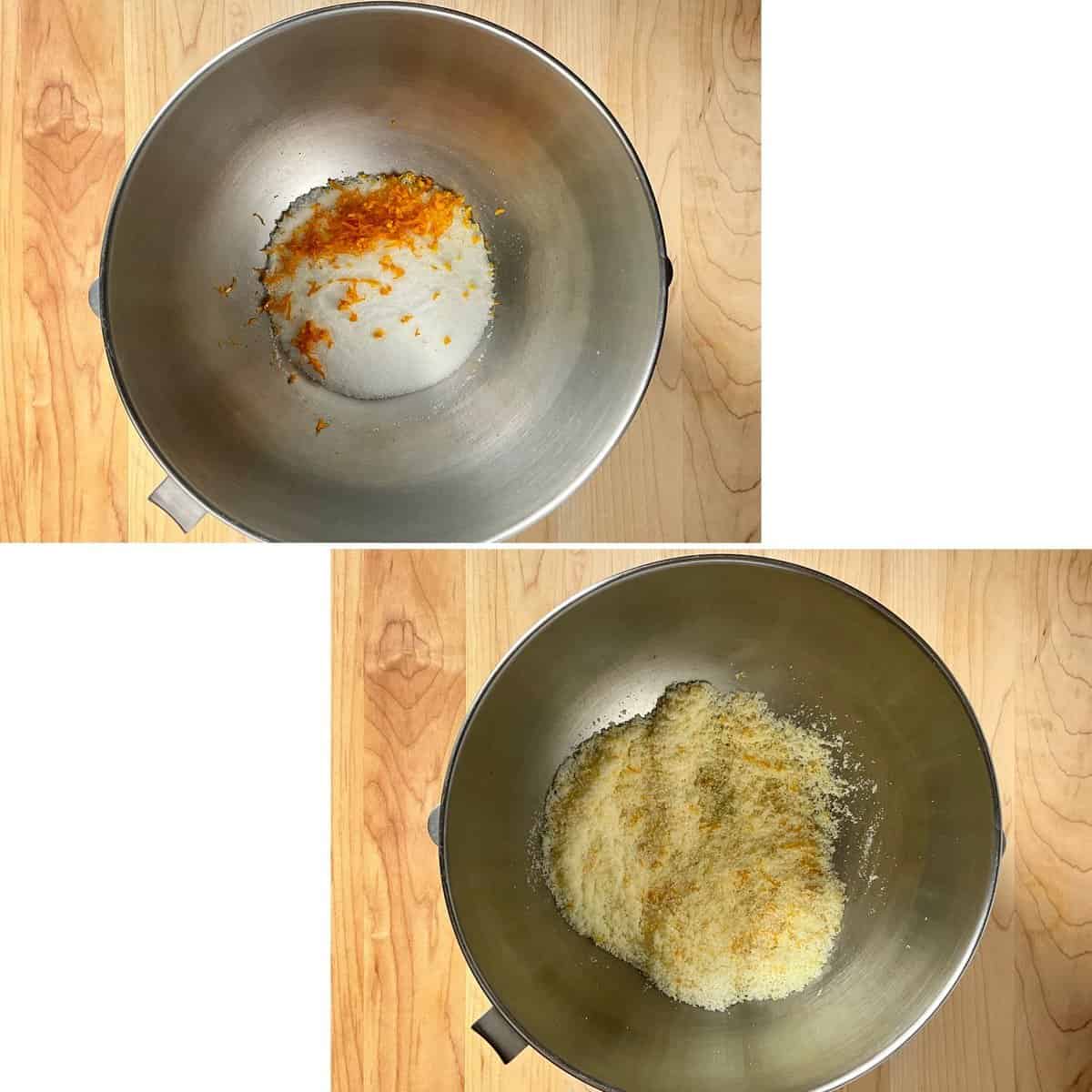
Combine ¾ cup of granulated sugar and the zest of one orange in a large stand mixer bowl. Using your fingertips, rub them together for a couple of minutes. Notice the change in color and aroma as the sugar absorbs the oils from the orange.
How to make Koulourakia dough
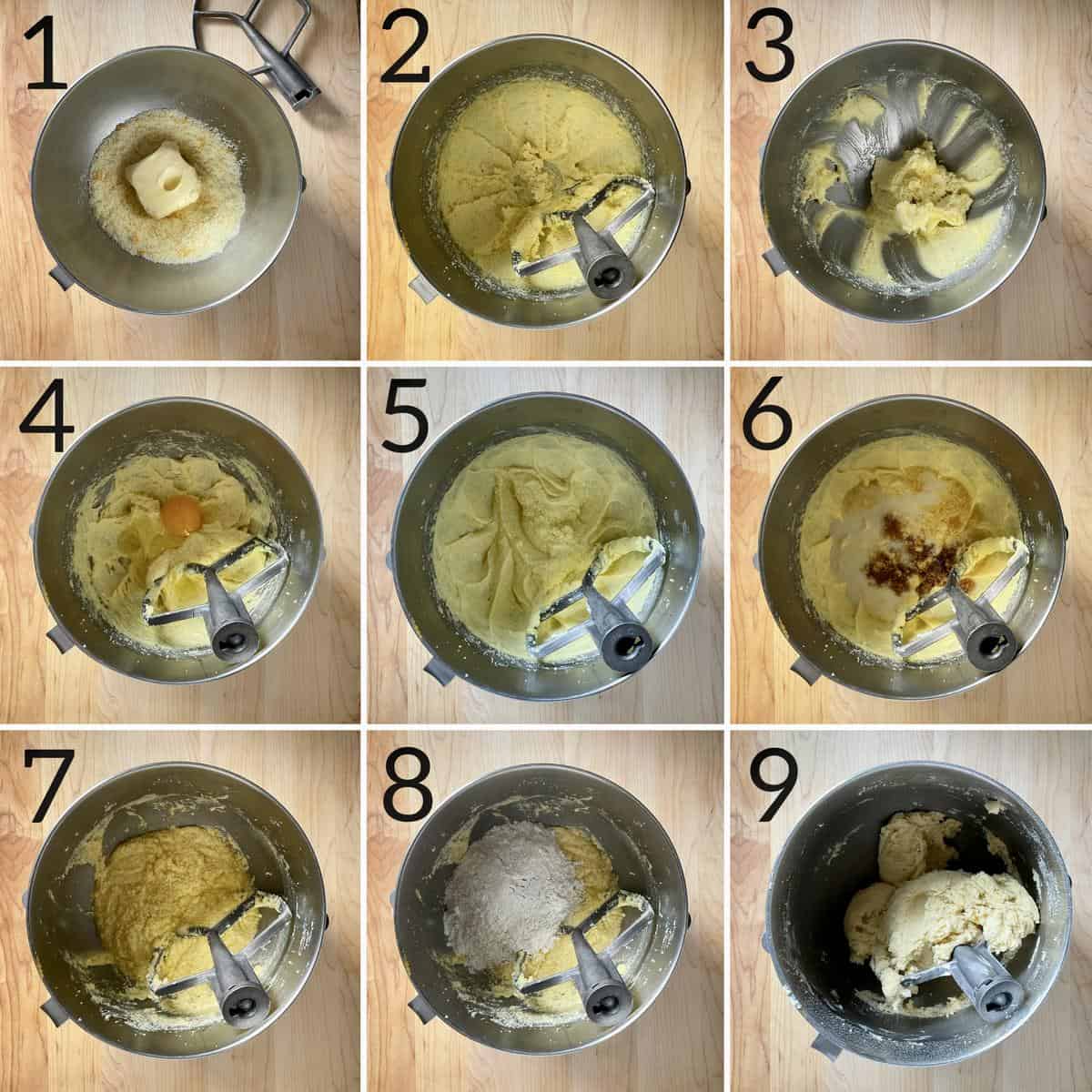
- Add the room-temperature butter to the orange sugar.
- With the paddle attachment, cream until the mixture becomes light, fluffy, and pale in color. This can take up to 5 minutes.
- Scrape down the sides of the bowl a few times to properly incorporate the butter and sugar.
- Next, add the 2 eggs and 1 egg yolk one at a time, scraping down the sides of the bowl.
- Notice how the mixture is light.
- Add the rest of the liquids: ¼ cup of milk, ¼ cup of orange juice, 1½ teaspoon of vanilla extract, and, if using, 1 teaspoon of ouzo.
- The mixture will curdle, this is normal.
- Slowly add the flour mixture, at low speed, and combine. The dough should be soft, but not sticky. If it is, add a few tablespoons of all purpose flour until you achieve the right consistency.
- You’re done when the dough pulls away from the sides of the bowl.
Optional: Cover with plastic wrap and chill for 20 minutes before rolling.
If you do not have a stand mixer, you can use a hand-held electric mixer to combine the ingredients.
Now comes the fun part!!!
How to shape the Koulourakia
First, let’s preheat the oven to 375°F (190°C). Make sure the oven rack is in the center of the oven. Then, line a large cookie sheet with parchment paper.
You can create different shapes and sizes since this is a soft, pliable dough. The traditional shape takes a little longer to shape when compared with others.
Whichever shape you decide to make, use a disher to measure out about a heaping tablespoon of dough weighing 25 grams.
There is no need to sprinkle your work surface with flour as you want your dough to adhere to it as you roll and shape it.
Are you ready to roll?
Here are a few examples of how to shape these sesame seed topped traditional Easter cookies:
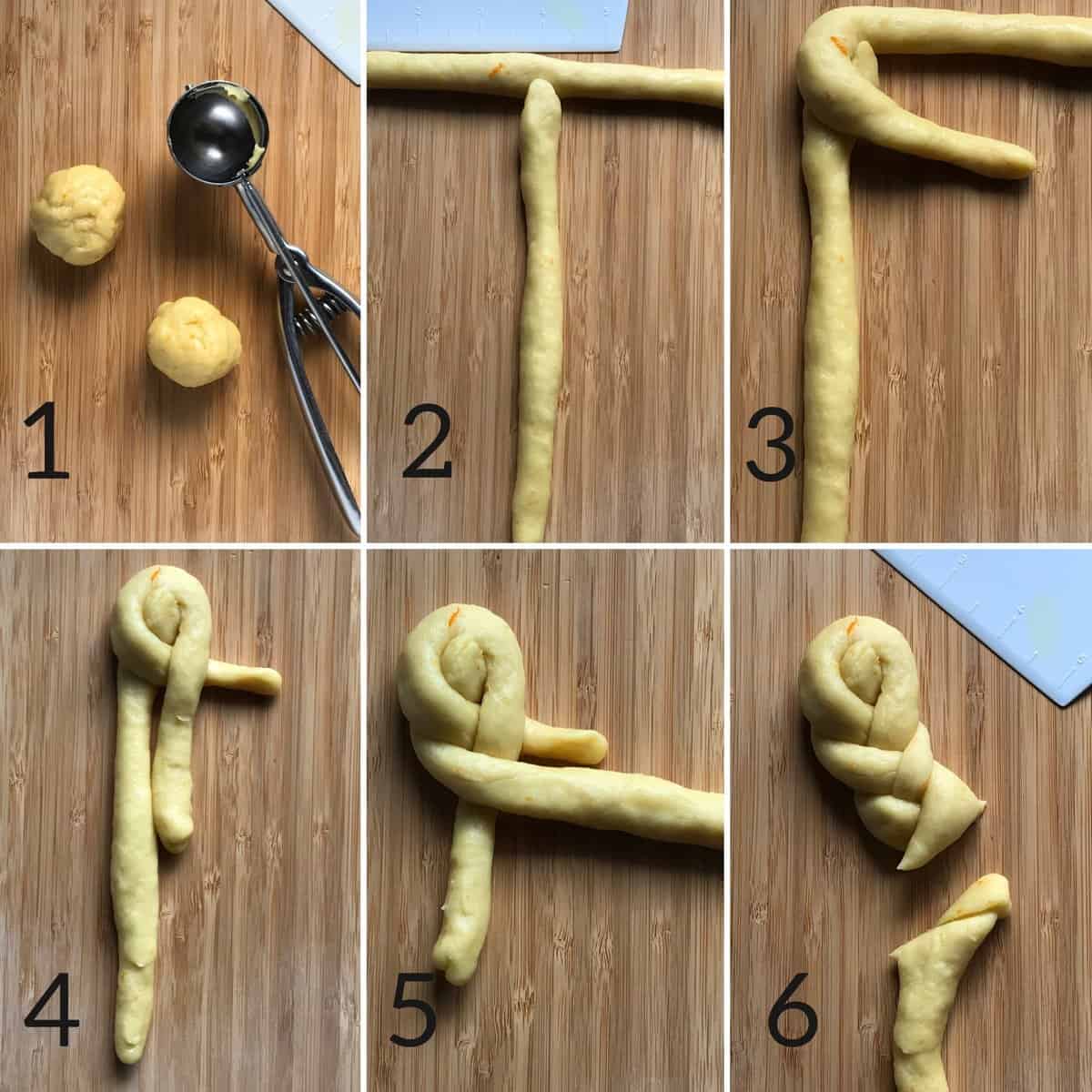
Braided koulourakia
- Scoop the soft dough with a medium-sized disher and roll it into a 1-1½-inch ball. Repeat.
- Roll the balls into 7-inch log shapes and form the letter “T.”
- Starting at the top left, pick up the letter “T” ‘s left portion and cross it over the middle section.
- Pick up the top right section of the letter “T,” cross it over and place it parallel to the long middle section.
- Please pick up the middle section and place it between the two sections, creating a braid.
- Complete the braid, cut off the end and gently tuck underneath.
Transfer to a parchment-lined baking sheet. Repeat these steps with all of the cookie dough. This fun shape yields 20 cookies.
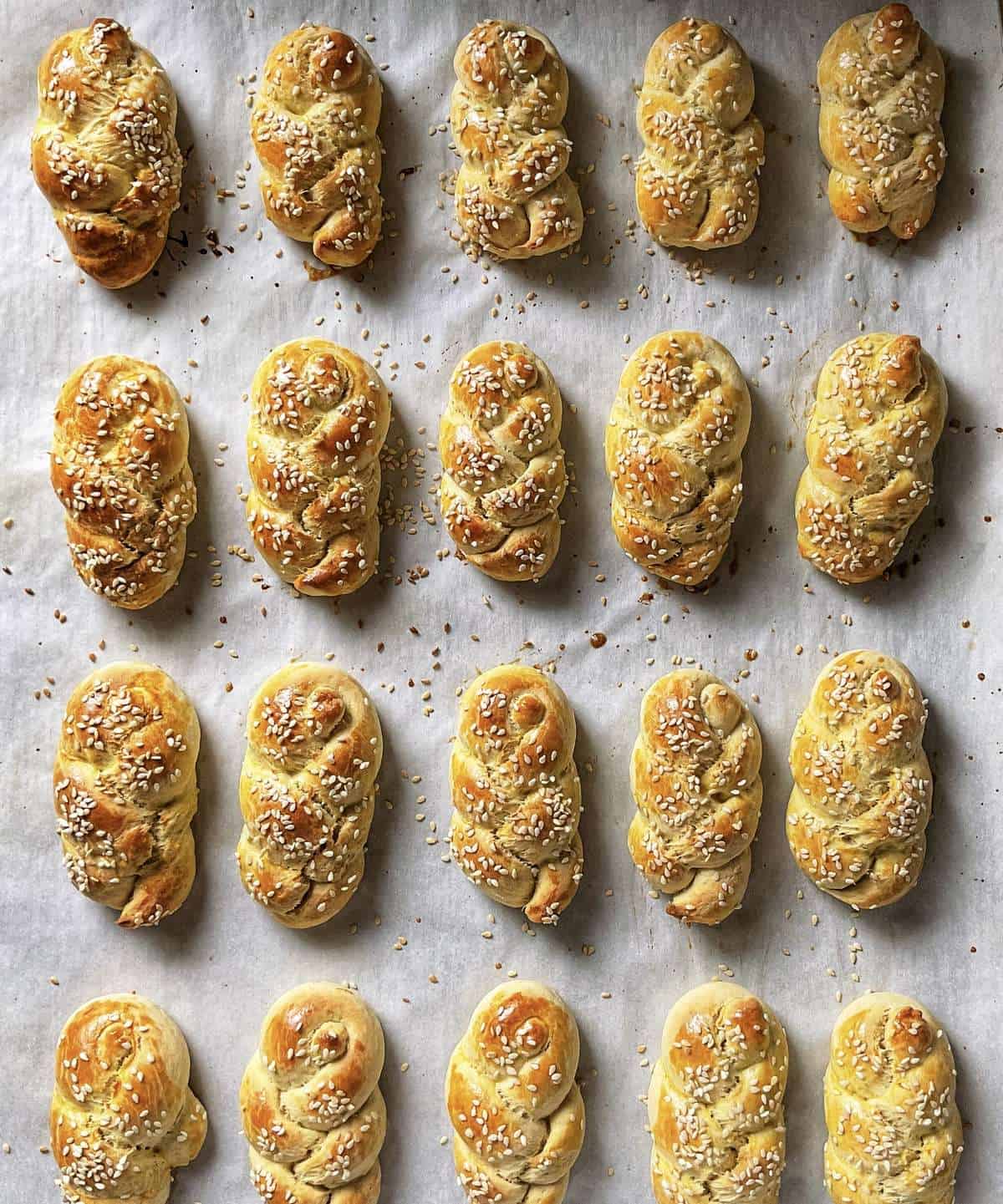
Hairpin shaped koulourakia
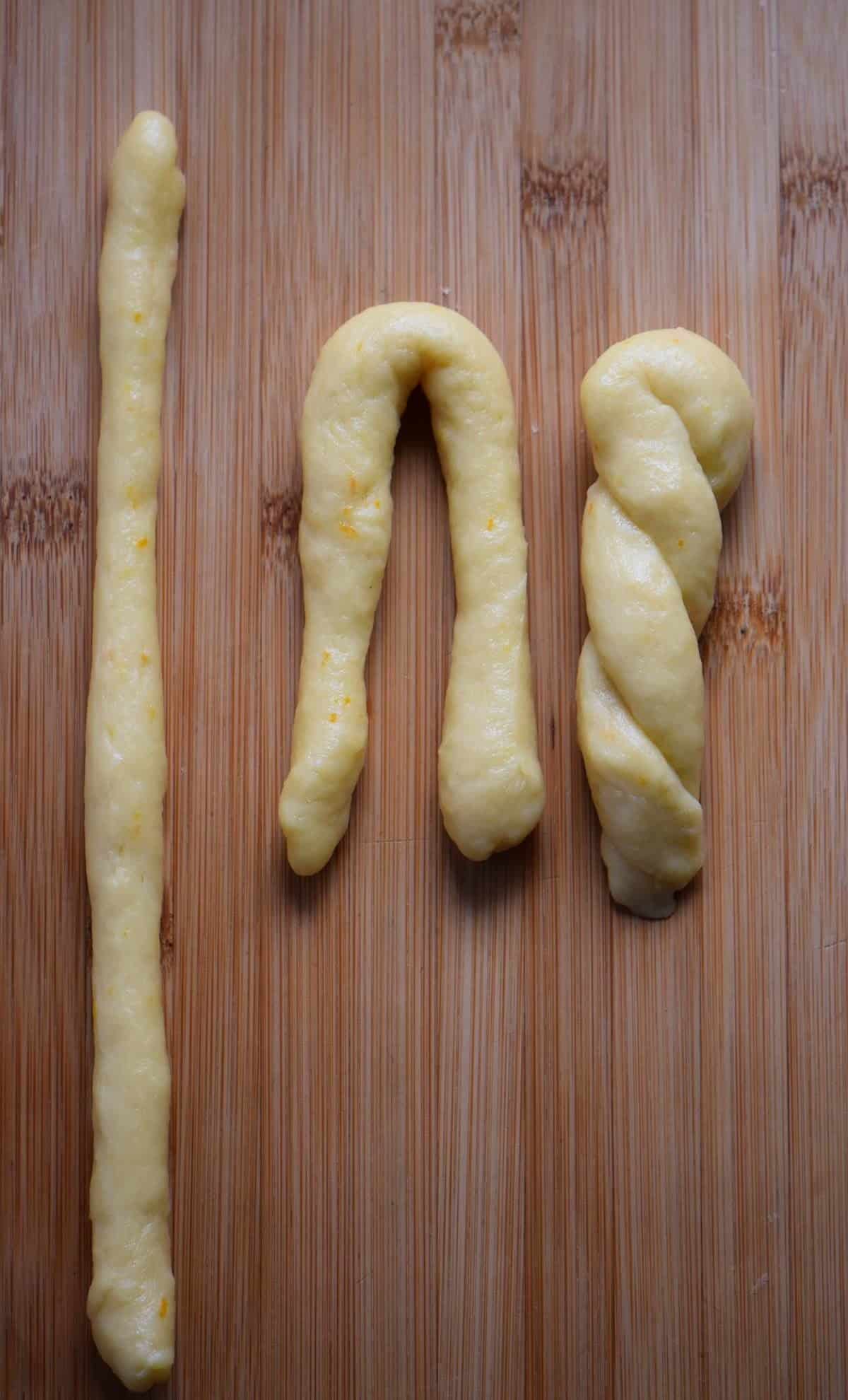
Scoop out your dough, roll into a 7-inch long rope, form an upside-down “U,” and twist the dough together along the entire length.
This shape is much faster to make and yields about 3 dozen cookies.
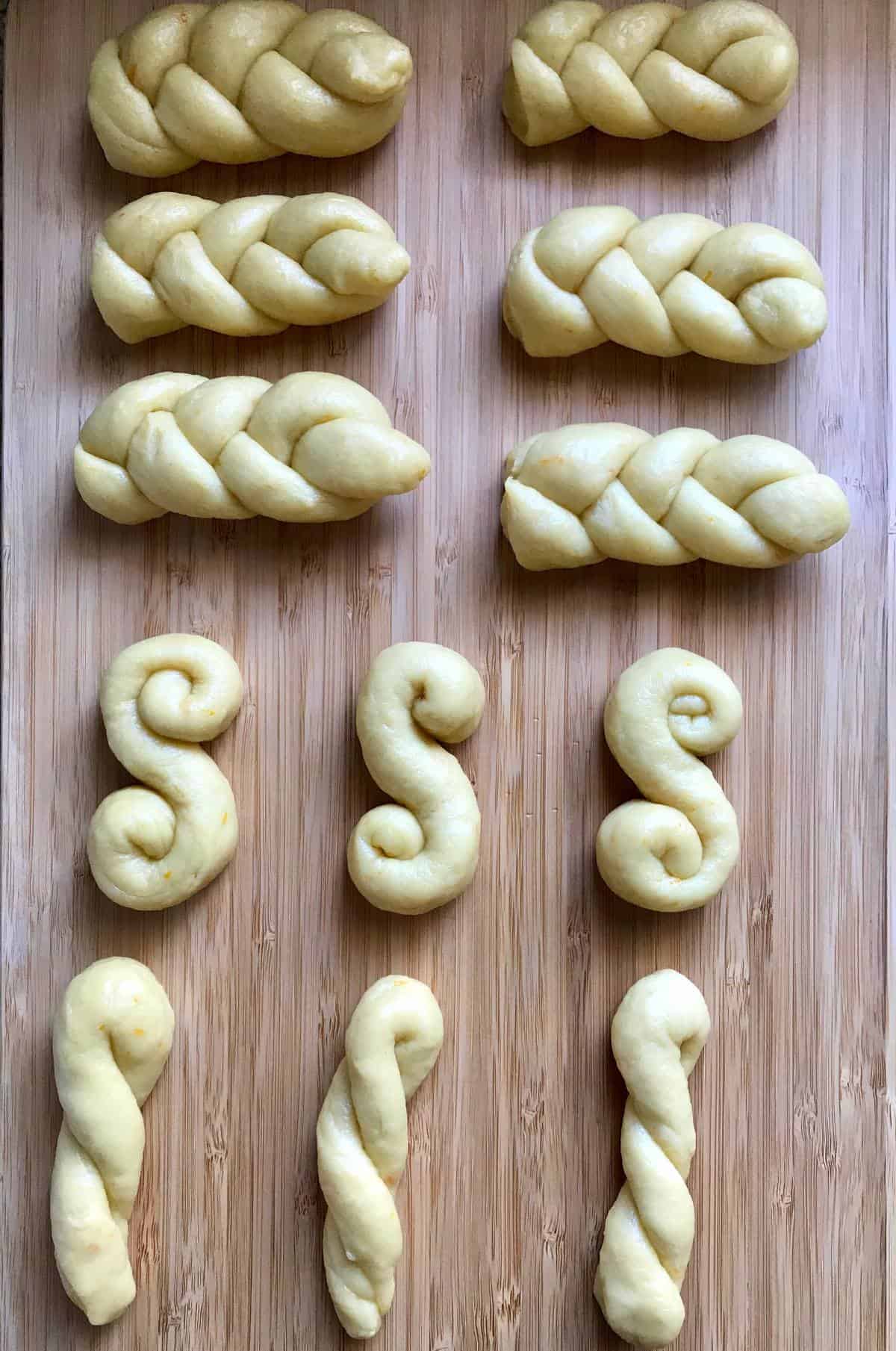
Place on the parchment-lined cookie sheet about 1 inch apart.
Brush with egg wash and sprinkle with sesame seeds, if using.
Bake for 15 minutes or until the underneath of the cookies turns golden brown.
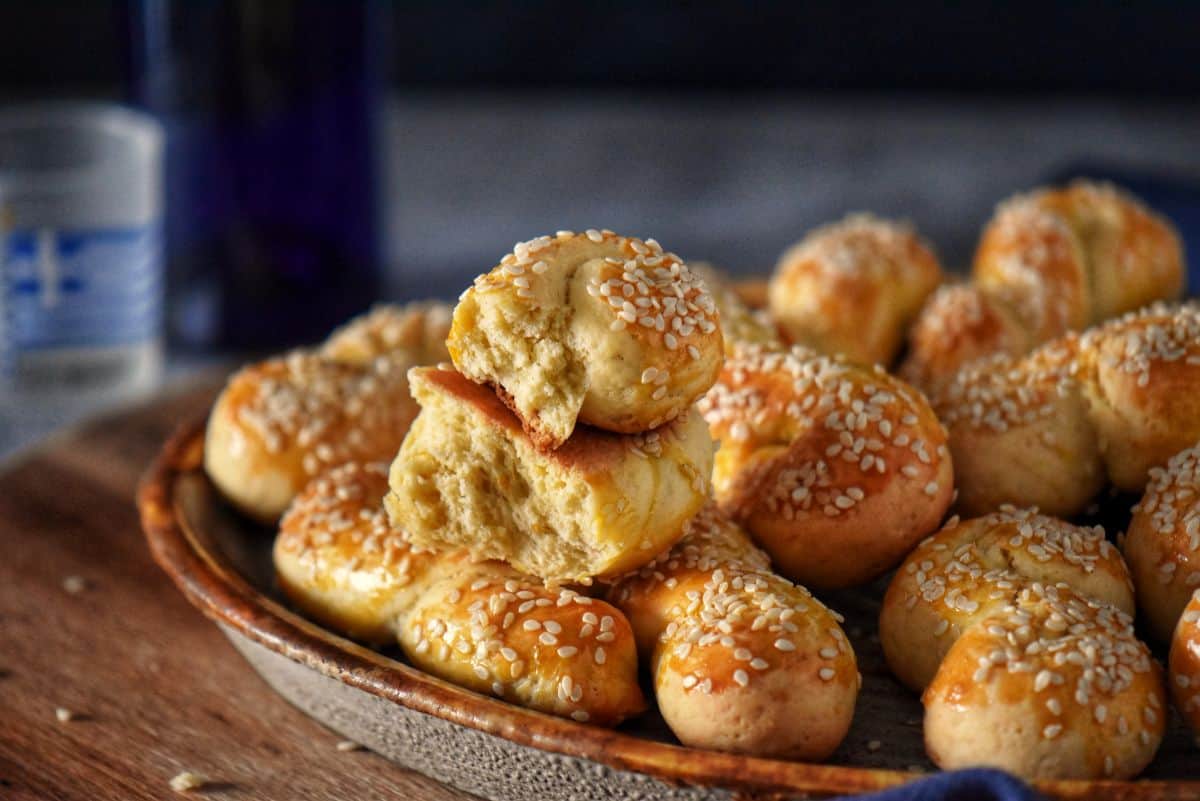
Tips
- Have the ingredients at room temperature for easier mixing.
- There is no need to use flour on your wooden board, as you want your dough to adhere to it as you are rolling and shaping the dough.
- Koulourakia cookies are pale in color, and so you will find that an egg glaze will provide a gleaming color; sesame seeds are optional.
- You can also ensure even baking by using a disher to scoop out the dough, no matter what shape you make them.
- The hairpin and long braided koulourakia are the perfect dunking cookies for your morning coffee. If you prefer, shape the dough into circles, braided wreaths, horseshoes, letters of the alphabet, scrolled “S” -any shape you like!
- The total yield depends on the shape of the cookie.
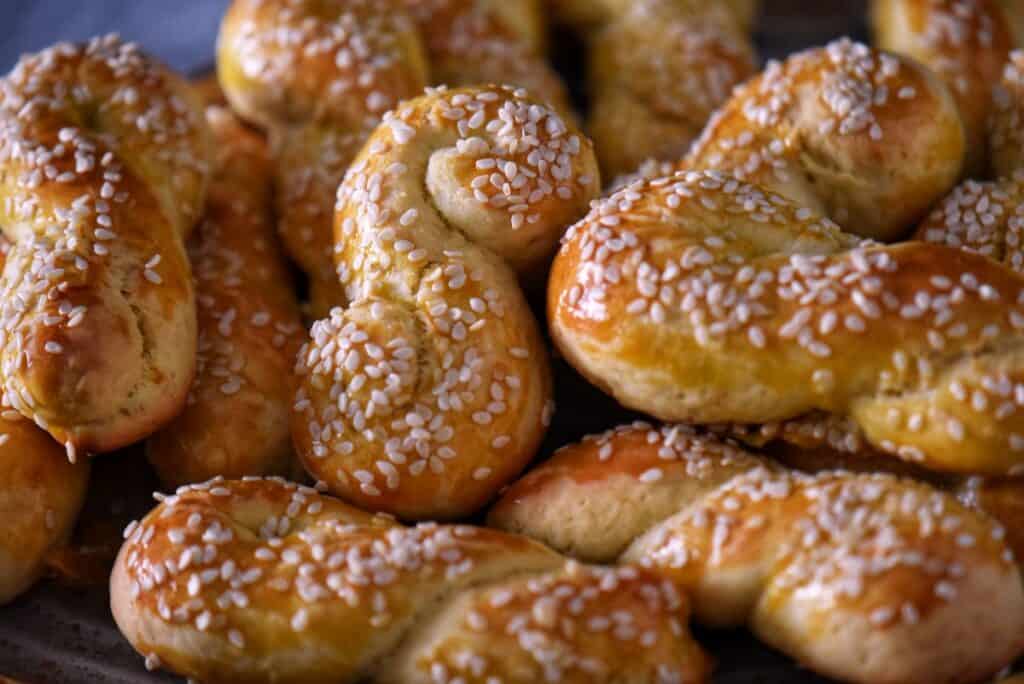
FAQ
Butter is a key ingredient in many baked goods recipes, including these Greek cookies. Room temperature butter mixes more easily with sugar and results in a smoother dough.
Press your finger into it to test if your butter is at room temperature. If there is an indentation and the butter yields to pressure, it’s ready to use. If the butter feels hard or cold, it needs to soften a little more.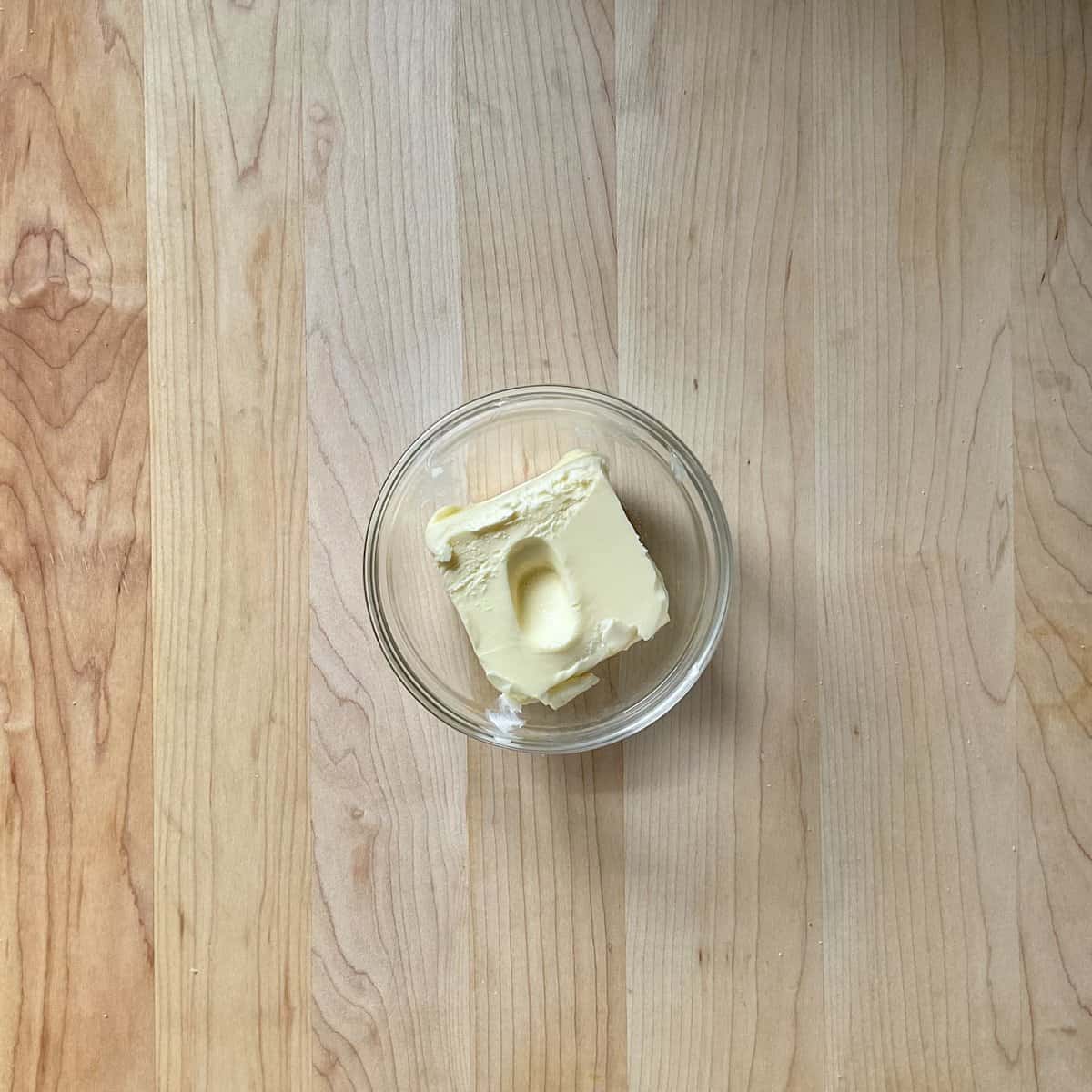
By rubbing the sugar with the orange zest (or any citrus fruit) it releases the oils and infuses the sugar. This, in turn, will create a more flavorful dough.
Once the cookies are at room temperature, they keep well in an airtight container at room temperature for up to two weeks. They can also be frozen for up to 2 months.
Best Cookies with Coffee
Recipe Inspiration
As many of you know, I would prefer to have a cookie (or two) with a cup of coffee than a slice of cake. As a result of this lifelong fascination, I am always looking for cookie recipes.
I first tasted Koulourakia over 40 years ago at my cousin’s (wife-to-be) bridal shower. It was love at first sight.
I wasn’t interested in the Italian cookies as I had a mother, two nonnas, and a couple of aunts who were terrific bakers. I have already shared so many of these recipes with all of you… lemon knots, biscotti, amaretti, wine cookies… Italian cookies, I know, up close and personal.
But, I did not have a γιαγιά… and so, this was my first experience with Greek butter cookies. But, of course, there would be many more occasions to collect recipes as a few of my cousins married into Greek families. As we say in Italian, una faccia, una razza…
Through the years, I have made changes to this Koulourakia recipe, as I had occasions to speak with colleagues who were of Greek origins and, of course, the γιαγιάs of my Greek cousins.
Since this Greek cookie has been around forever, there are probably thousands of variations. I have seen some recipes that will add melted butter. Others will add both butter and shortening. I have also seen a vegan version of this Greek recipe…truly endless variations.
Like I always say, there is no right or wrong recipe; it is always a matter of personal taste and preferences.
Do you have a different recipe for Koulourakia? I would love to hear about it in the comments!
To all of my Greek friends celebrating Easter… Kalo Pascha!
THANKS SO MUCH for following and being part of the She Loves Biscotti community, where you will find Simple & Tasty Family-Friendly Recipes with an Italian Twist.
Ciao for now,
Maria
★★★★★ If you have made these Greek Easter cookies, I would love to hear about it in the comments below and be sure to rate the recipe!
Recipe
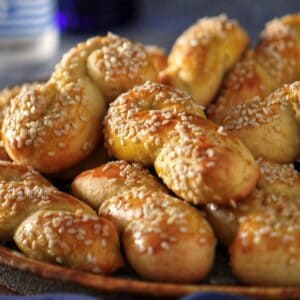
Easy Greek Easter Cookies: Koulourakia Recipe
WANT TO SAVE THIS RECIPE?
Ingredients
- 3½ cups all purpose flour 500 grams
- 1½ teaspoons baking powder
- ¾ cup granulated sugar 150 grams
- zest of 1 orange
- ½ cup butter 115 grams, cubed, room temperature
- 2 large eggs room temperature
- 1 large egg yolk room temperature
- ¼ cup milk room temperature
- ¼ cup orange juice freshly squeezed
- 1½ teaspoons vanilla extract pure
- 1 teaspoon ouzo or Sambuca (optional)
Egg wash:
- 1 egg yolk
- 1 teaspoon water
- 2 tablespoons sesame seeds sprinkled on egg wash (optional)
Instructions
- Preheat oven to 375°F (190°C). Place rack in the center of oven. Line cookie sheet with parchment paper.
- Sift together the flour and baking powder and set aside. (see recipe note).
- Place the sugar and the orange zest in the bowl of a stand mixture. Rub these two ingredients together for 2-3 minutes with your fingertips. Notice the change in color and aroma as the sugar absorbs the oils from the orange.
- Add the room temperature butter with the paddle attachment, beat until light and fluffy, approximately 5 minutes. Make sure to scrape down the sides of the bowl a few times.
- Add the eggs, one at a time beating well and scraping down the sides of the bowl between each addition.
- Add the egg yolk and again, beat well and scrape down the sides of the bowl.
- Add the milk, orange juice, vanilla extract, and ouzo (if using), beat together for 30 seconds. The mixture will appear curdled.
- At low speed, add the 3½ cups of flour and baking powder. The dough should be soft but not sticky. Add a few tablespoons of flour if the dough is still sticky.
- Optional: cover the dough with plastic wrap and chill for 20 minutes before rolling.
- With a medium-sized cookie scoop, portion all the dough. You should have 40 smalls balls of dough, each weighing 25 grams.
- Roll each ball of dough into a 7-inch log. Shape into desired shapes (braids, pinwheels, twists, etc.) Refer to the pictures in the post.
- Place on parchment-lined cookie sheets about 1 inch apart.
- Brush with egg wash and sprinkle with sesame seeds.
- Bake for 15 minutes or until the underneath of the cookies turns golden brown.
- OPTIONAL: During the last minute of the baking, switch to broil for the tops to become slightly golden.
- Allow to cool for a few minutes on the baking sheet before transferring to a wire rack to completely cool down.
- Can be kept in an airtight container at room temperature for about 2 weeks. Cookies can also be frozen.
- Step-by-step photos can be found in the article. You can also watch the video on the recipe card to see how to shape these Greek cookies.
Video
Notes
- The dough should be soft, but not sticky. If the dough is still a bit sticky, add flour, one tablespoon at a time until it is still soft but no longer sticky.
- Have the ingredients at room temperature for easier mixing.
- There is no need to use flour on your wooden board, as you want your dough to adhere to it as you are rolling and shaping the dough.
- Koulourakia cookies are pale in color, and so you will find that an egg glaze will provide a gleaming color; sesame seeds are optional.
- You can also ensure even baking by using a disher to scoop out the dough, no matter what shape you make them.
- The hairpin and long braided koulourakia are the perfect dunking cookies for your morning coffee. If you prefer, shape the dough into circles, braided wreaths, horseshoes, letters of the alphabet, scrolled “S” -any shape you like!
- The total yield depends on the shape of the cookie.
Nutrition
This post was originally published on April 6, 2018, and republished on March 18, 2022, and again on April 7, 2025 with updated content and photos. Thanks for sharing!


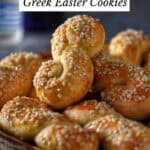
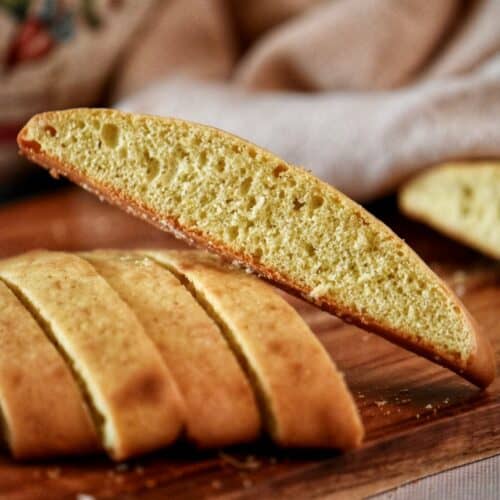
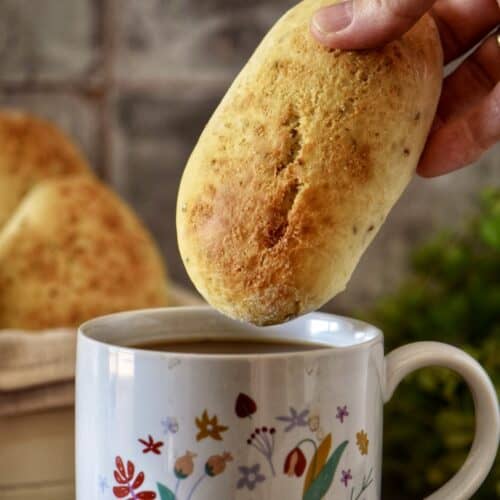
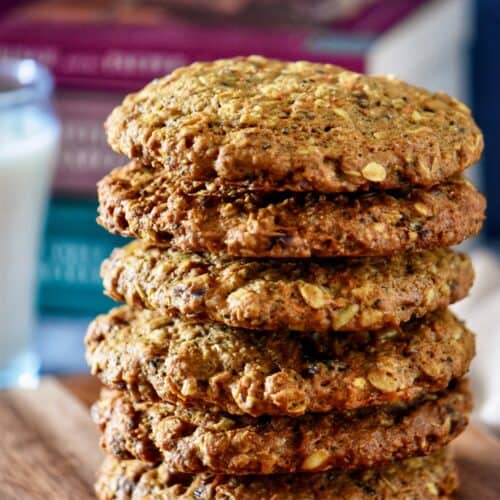
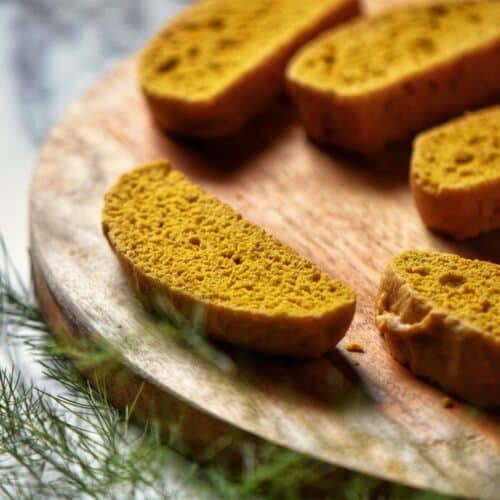
Bill convis
I have tried baking these cookies from an old hand-written recipe that was very similar but called for 12 cups of flour. Cookies were Ok but trying to size the recipe down left me thinking I could do better. This recipe is perfect (I am using an Anise extract rather than Ouzo because I have it and don’t have the Ouzo). I love how specific you are including the pictures, how long it may take to cream the butter, and how to avoid ‘tacky’ dough. Thank you, I will be looking at your other recipes as well.
Maria
How wonderful Bill! Thanks for sharing. Great idea to use anise extract in these cookies.
Cj
Are these soft inside, sort of cakey? I’m looking for a recipe for the Stella Doro Roman Egg Biscuits and this looks very similar. I want to make sure it isn’t hard throughout like the Italian S cookies or how biscotti is. Thanks!
Maria
Hi Cj! I would say these are soft on the inside. As you probably know, the total amount of flour used will determine the texture. If you have a scale, I would weigh the flour… it is more precise than scooping it. Have fun!
June
Just made these cookies today for the first time. They were delicious! I have eaten them in the past and was looking for a recipe to try out. The subtle orange flavor really compliments them. I will definitely make them again. Thanks for your recipe! It’s a keeper!
Maria
How wonderful June! Thanks so much for sharing.
charlotte (Pappas) Hains
I have been making Koulourakia for overf 50 years! I now substitute Almond milk in place of regular milk; it works fine. I also sprinkle sesame seeds and include some as I am rolling the cookies. Delicious in fragrance, too. I will try the orange zest sometime. Kali Mera!
Maria
Thanks so much for sharing Charlotte!
Deb H
I have read that baking ammonia is good to use in koulouraki instead of baking powder. Would you recommend that? And if I try that, would the ration be 1:1 (in other words, in your recipe I would use 1 1/2 teaspoons baking ammonia)? I want to make these for my Greek neighbors, so I want them to be perfect. Thanks!!
Maria
Thanks for your interest Deb. I have not yet tried this recipe with baking ammonia. From what I read, it seems like it is a 1:1 ratio. If you do experiment with the recipe, I would love to hear about your results.
Margaret
Hi Maria:
Like you I grew up eating delicious Italian food and baked goods all made from scratch by my mom and my aunts. I was first drawn to your website because like you I love biscotti. This is the second time I have made your recipe of Koulourakia. I had never heard of them but you said they reminded you of biscotti. You are so right. They are so delicious and one of my favorite cookies. I do the braided method as I think they are so pretty. A perfect bite.
Margaret
Maria
Thanks so much Margaret. I am thrilled to read you are enjoying these wonderful cookies. They really are such a treat!
Nicole Silveira
I dont have parchment paper and refuse to go to the store for 1 ingredient…will it matter?
Maria
Thanks for your interest Nicole. No, simply grease and flour your pan… they should be fine.
Anne
I surfed around a bit to find a recipe for Koulourakia that I could make for Orthodox Easter this year and liked the sound of yours, Maria. I suspect the ouzo enhanced the appeal of your recipe. I have this bottle of homemade ouzo that was given to me when I was in Greece seven years ago and I have barely made a dent in it, so this was a great opportunity. My Greek Mum, who is in now her mid 80s, emigrated to Australia in the early 60s, retained many of the traditions of the home country. She kept asking me if I was going to dye eggs or make Koulourakia so I got the hint and took the plunge. They turned out great and I’m looking forward to hearing what my Mum says about the photo of the Koulourakia I’ve sent her (I live in the Netherlands so she won’t get to taste them amid the restrictions due to covid19).
Maria
God bless your mom. Thanks so much for sharing Anne. I am thrilled to read this! Wishing you and your loved ones a Happy Easter!
Amelia Roberts
My mother use to make lentel koulouria without eggs or dairy products and used yeast, flour, oil & brandy But unfortunately she didn’t pass on the recipe and died aged 102. My siblings and myself have tried to replicate hers but fail each time!!!! She came from Kastellorizou (just off the Turkish cost) So I am hoping that someone will know the recipe and send it to me, Regards, Amelia. (Sydney Australia)
Maria
I am so sorry for your loss Amelia. Hopefully, there is a reader that can help you out. Thanks for sharing.
Magda
I made them without much thought cos my daughter insisted on koulourakia while I had just finished flaunes! But gosh the outcome was so unexpected! They are fab! There is something magic about this recipe! I’m in bed now rewriting it into my cookbook. Thank you!
Maria
How wonderful Magda! Thanks for sharing!
Celina K.
I just made these today and they are by far the best Greek Koulourakia I’ve ever had !!! Perfect ratio and perfect taste !! Thank you !!!
Maria
You just made my day! Thanks Celina! Happy Easter!!!